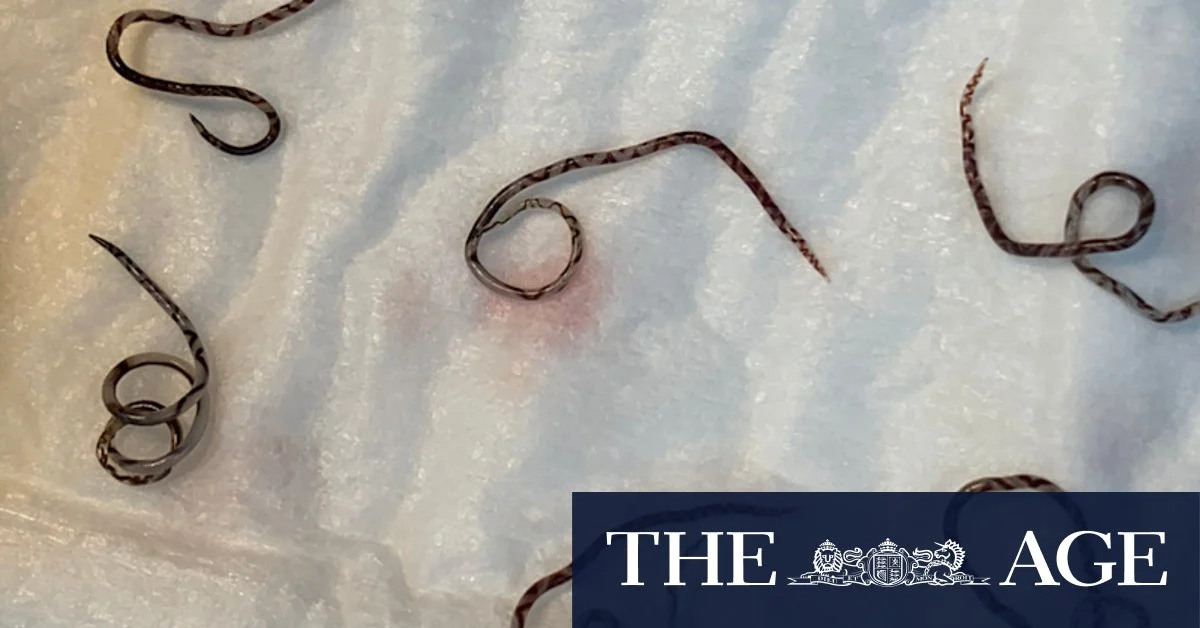Dog infections peaked in 2022 with 32 cases, probably due to record rain driving population booms of slugs and snails, which transmit the parasite when eaten.
The risk of infection was highest between two and 10 months after heavy rainfall.

Phoebe Rivory, lead author of the study.Credit: University of Sydney
“This is another example how the La Nina events with wetter-than-average periods in Australia lead to increased disease transmission and occurrence,” senior author from the vet school Professor Jan Slapeta said.
Another Australian study identified 28 human cases between 1971 and 2018. Most people were infected from eating unwashed lettuce or vegetables. The mortality rate was 18 per cent among those infected by the parasite; 14 per cent suffered long-term neurological issues and 57 per cent made a full recovery.
Loading
“The infection is probably much more common than realised because of a low level of its awareness among medical practitioners, difficulty of its diagnosis and the likelihood that most cases are mild,” the authors of the University of Queensland study wrote.
Shokoofeh Shamsi, a professor in veterinary parasitology at Charles Sturt University who wasn’t involved in the research, said there was a level of complacency about the public health risk posed by parasites.
“It is really concerning that in medical schools, we don’t teach about parasites enough to our students because these are the people who are at the forefront of diagnosis,” she said.
Shamsi said the Sydney University study was good research and that rat lungworm was notorious among parasitologists – but the broader public were mostly unaware of the parasite.
“It’s a very, very nasty one, very deadly and pathogenic,” she said, adding people could avoid parasites by washing their hands and vegetables well.
The new findings underscore the importance of One Health thinking, which treats health of animals, the environment and humans as unified, Slapeta said.
“With ongoing changes in climate, understanding the epidemiology of rat lungworm disease becomes imperative for protecting our pets and ourselves. Steering clear of potentially infected slugs and snails can be life-saving.”
The Examine newsletter explains and analyses science with a rigorous focus on the evidence. Sign up to get it each week.


